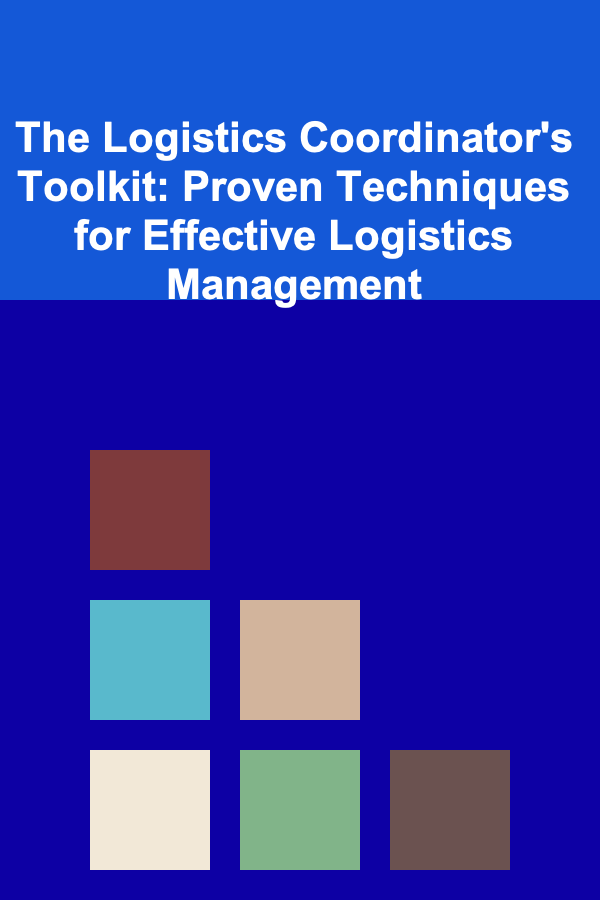
How to Start a Budgeting Routine That Works for Your Lifestyle
ebook include PDF & Audio bundle (Micro Guide)
$12.99$8.99
Limited Time Offer! Order within the next:

Creating a budget is one of the most effective steps toward financial freedom, yet it remains a daunting task for many. Despite the wide availability of budgeting tools and advice, so many people still struggle with sticking to a budget. The key to success is not just in creating a budget but in developing a budgeting routine that fits your unique lifestyle and goals.
In this article, we will explore how to start a budgeting routine that works for you, offering practical advice and deep insights into developing habits that can keep your finances on track.
Understanding the Importance of Budgeting
Before we dive into how to start a budgeting routine, it's important to first understand why budgeting is crucial.
- Control Over Your Finances: Budgeting is essentially about taking control of your money, ensuring that every dollar has a purpose. Whether it's saving, paying off debt, or spending, a budget gives you clarity over where your money goes.
- Financial Security: A budget can help you plan for emergencies, save for short-term and long-term goals, and build wealth. It acts as a road map to financial freedom, preventing you from spending impulsively.
- Debt Reduction: For many, the burden of debt is overwhelming. Budgeting allows you to create a plan to pay down debt systematically without neglecting other financial goals.
- Stress Reduction: One of the biggest sources of stress is financial uncertainty. Knowing exactly where your money is going and where it needs to go next can reduce financial stress and give you peace of mind.
Having a clear budgeting routine provides both short-term and long-term benefits. But how do you go about setting it up? The following sections will guide you through the steps to create a budgeting routine that works for you.
Step 1: Assess Your Current Financial Situation
The first step in creating any budgeting routine is to understand where you currently stand financially. To do this, gather all of your financial statements and start tracking your income and expenses. This will help you get an accurate picture of your finances.
Track Your Income
Start by documenting all sources of income, including your salary, side hustle income, freelance work, and passive income. Write down the exact amount you earn after taxes and deductions. For instance, if you have a full-time job, note your after-tax salary. If you have side gigs, include those earnings as well.
Track Your Expenses
The next step is to list all of your monthly expenses. It's essential to be as thorough as possible. Expenses can be broken down into two categories:
- Fixed Expenses: These are consistent, recurring expenses such as rent or mortgage, utilities, car payments, insurance, and subscription services (e.g., Netflix, gym memberships).
- Variable Expenses: These are more flexible and include groceries, entertainment, dining out, clothing, and personal care.
Be honest and thorough. Keep track of every purchase, no matter how small, for at least a month to get an accurate idea of where your money is going.
Identify Debt and Other Obligations
If you have any debts, whether from credit cards, student loans, or personal loans, make a list of all your liabilities. Include the interest rates, outstanding balances, and minimum monthly payments.
Once you have an understanding of both your income and expenses, you can better evaluate where your money is going and identify areas where you can cut back or reallocate funds.
Step 2: Define Your Financial Goals
Next, it's essential to have clear financial goals that will guide your budgeting decisions. These goals will serve as motivation and benchmarks to track your progress.
Short-Term Goals
These are goals you hope to accomplish within the next year or so. They may include:
- Building an emergency fund
- Saving for a vacation
- Paying off a credit card balance
Medium-Term Goals
Medium-term goals typically span one to five years. Some examples might be:
- Buying a car
- Saving for a home down payment
- Paying off student loans
Long-Term Goals
These are goals that may take years to achieve but are just as important. Long-term goals could include:
- Saving for retirement
- Building wealth through investments
- Paying off a mortgage
Your financial goals will influence your budget, so it's important to align your budgeting routine with your objectives. For example, if one of your goals is to save for a vacation, you'll need to allocate a portion of your monthly budget for that purpose.
Step 3: Choose a Budgeting Method
There are many ways to approach budgeting, and the method you choose should align with your lifestyle and financial habits. Below are a few popular budgeting methods:
1. The 50/30/20 Rule
This method is simple and effective for many people. It suggests dividing your after-tax income into three categories:
- 50% for Needs: These are essential expenses like housing, utilities, groceries, insurance, and transportation.
- 30% for Wants: These are discretionary expenses, such as entertainment, dining out, shopping, and hobbies.
- 20% for Savings and Debt Repayment: This portion should go toward saving for goals like building an emergency fund, retirement, and paying down debt.
2. Zero-Based Budgeting
This method is all about giving every dollar a purpose. At the start of each month, you allocate your income to different categories, ensuring that your total expenses equal your total income. Every dollar should be assigned to something: saving, spending, or debt repayment. This method is ideal for people who want to have complete control over their money and ensure that nothing goes unaccounted for.
3. Envelope System
This budgeting technique is especially useful for people who struggle with impulse spending. You allocate cash for different categories of spending (groceries, entertainment, etc.) into separate envelopes. Once the cash in an envelope runs out, you can't spend any more in that category for the month. This is a hands-on, physical method that forces you to stick to your budget.
4. The Pay-Yourself-First Method
This approach emphasizes paying yourself (saving or investing) before addressing other expenses. The idea is to prioritize savings and debt repayment by automating the process, ensuring that these goals are always met before discretionary spending occurs. It works well for those who have difficulty saving or are prone to spending too much on non-essential items.
5. The Anti-Budget Method
For those who dislike rigid budgeting systems, the anti-budget approach allows more freedom. The idea is to save a fixed percentage of your income (e.g., 20%) and let the rest be used as you see fit, without categorizing every expense. This is less structured but works for people who want a flexible budget.
Step 4: Create Your Budget and Set Up a Routine
Once you've chosen your budgeting method, it's time to create your budget. Using the information you've gathered about your income, expenses, and financial goals, follow these steps:
- Set realistic spending limits for each category based on your income and goals. Make sure your budget allows for some flexibility for unexpected expenses.
- Track your spending regularly. Use budgeting tools like Mint, YNAB (You Need a Budget), or even a simple spreadsheet to monitor where your money goes. Regularly reviewing your budget will help you stay on track.
- Adjust as needed. Life changes---expenses fluctuate, income increases or decreases, and goals evolve. Don't be afraid to tweak your budget as needed to ensure it reflects your current situation.
Automation is Key
One of the most effective ways to stick to your budget is through automation. Set up automatic transfers to savings accounts or for debt payments, ensuring that these essential expenses are taken care of before you have the chance to spend that money elsewhere.
Additionally, consider automating your bills and subscriptions. This minimizes the chance of forgetting to pay a bill, leading to late fees or interest charges.
Establish a Routine
Consistency is crucial when it comes to budgeting. Set aside time each week or month to review your spending, track your progress toward goals, and make necessary adjustments. By developing a budgeting routine that you stick to, you build a habit that will serve you well in the long run.
Step 5: Review, Adjust, and Evolve
Budgeting is not a one-time task but an ongoing process. It's important to regularly assess your financial goals and adjust your budget accordingly.
Monitor Your Progress
Make sure you're on track with your savings and debt repayment goals. Review your budget monthly and make any necessary changes if you find that your goals have shifted or that certain categories need more or less attention.
Celebrate Milestones
When you hit a milestone, whether it's paying off a credit card, hitting a savings target, or reducing your discretionary spending, take time to celebrate. Recognizing your achievements reinforces positive behavior and keeps you motivated to continue.
Stay Flexible
Life happens, and budgets need to be adaptable. If you face an unexpected expense, adjust your budget for the month accordingly, and don't let it derail your progress. Flexibility and resilience are key to sticking to a budget in the long run.
Conclusion
Starting a budgeting routine that works for your lifestyle is all about finding a system that aligns with your goals and financial habits. Whether you're working on saving, paying off debt, or building wealth, the most important part of budgeting is getting started.
Take the time to assess your financial situation, define clear goals, choose a budgeting method that works for you, and automate your process as much as possible. With consistency, flexibility, and regular adjustments, you can create a sustainable budgeting routine that helps you achieve financial success.

The Logistics Coordinator's Toolkit: Proven Techniques for Effective Logistics Management
Read More
How to Grow Garlic Successfully
Read More
How to Celebrate Successes as a Remote Team
Read More
Feng Shui for Renters: Making the Most of Your Temporary Space
Read More
How to Store Fresh Produce to Make It Last
Read More
How to Weave with Plant Fibers: A Beginner's Guide
Read MoreOther Products

The Logistics Coordinator's Toolkit: Proven Techniques for Effective Logistics Management
Read More
How to Grow Garlic Successfully
Read More
How to Celebrate Successes as a Remote Team
Read More
Feng Shui for Renters: Making the Most of Your Temporary Space
Read More
How to Store Fresh Produce to Make It Last
Read More